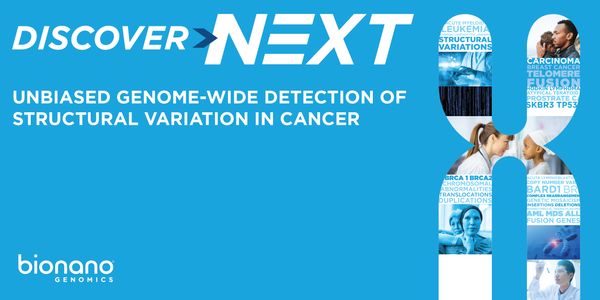T cell functionality
T cells, also called T lymphocytes, are an integral component of the adaptive immune system which seek out and eliminate foreign particles. Functions of T cells include killing infected host cells, activating other immune cells, producing and releasing immune messengers called cytokines into the body, and regulating the immune response. When T cell functionality is hindered by disease, genetics, or environment, the immune system could be at severe risk.
-
APR 29, 2020 | 6:00 AM...APR 24, 2020 | 8:00 AMDATE: April 24, 2020 TIME: 8:00am PT, 11:00am ET, 5:00pm CET...APR 23, 2020 | 10:30 AMOur laboratory uses tools from pharmacology, genomics, and cell signaling to identify new precision anticancer therapeutic strategies. Under this broad heading, our work involves three key a...APR 23, 2020 | 9:00 AMLearning Objectives: 1. What is wrong with healthcare today 2. What kinds of omics and wearables data can be used to best predict disease risk and manage health...APR 22, 2020 | 12:00 AMEstrogen metabolism is the ability to favorably excrete potentially toxic estrogens through urine and sweat. Impaired estrogen metabolism is associated with Endometriosis and Polycystic Ovar...APR 22, 2020 | 12:00 AMAs genomics plays an ever expanding role in healthcare and research, educational programs focused on applied genomics have not kept pace with the demand for trained students. In this talk, w...APR 22, 2020 | 12:00 AMComplex genomes, including the human genome, contain ‘dark’ regions that standard short-read sequencing technologies do not adequately resolve—overlooking many variants tha...APR 21, 2020 | 7:30 AMModern biomedical research is being driven by large scale genetic and proteomic research to identify new targets for the study of disease mechanisms. While these techniques have been incredi...Speaker: Scott Soderling, PhDAPR 21, 2020 | 12:00 AMSingle cell RNA sequencing (scRNA-seq) emerged to characterize gene expression differences between individual cells, allowing a higher resolution look at mRNA abundance than bulk RNA- seq. H...APR 14, 2020 | 9:00 AMDATE: April 14, 2020 TIME: 9:00am PDT, 12:00pm EDT Besides being Gibco Cell Culture Heroes, what do Vivek, Sandra, Daisy, Ameet and Kristine all have in common? They are all stuck at home fo...Speaker: Kristine Wadosky, PhD , Ameet Chimote, PhD , Elizabeth Delery, PhD , Daisy Shu, B.Optom, PhD , Vivek Kamat, PhD , Sandra Hammer, PhDSponsored By: Thermo Fisher Scientific/GibcoAPR 08, 2020 | 12:00 AMStrong performance for a Facility of the Future for the Life Sciences industry requires more than optimal manufacturing process development and facility design. The sector encompasses a dive...APR 08, 2020 | 12:00 AMThe NIST Biomanufacturing Program develops measurement science, standards, reference data and tools to support the development, manufacturing, and regulatory approval of biologic medicines....APR 08, 2020 | 12:00 AMThere has been an increasing number of successful gene therapy clinical trials, leading to regulatory approvals of numerous gene therapy products, in particular ones based on the adeno-assoc...APR 02, 2020 | 8:00 AMDATE: April 2, 2020 TIME: 8:00am PT, 11:00am ET Cyclins A2 and E1 regulate the cell cycle by promoting S phase entry and progression. We recently identified a hepatocellular carcinoma (HCC)...MAR 26, 2020 | 9:00 AMDATE: March 26, 2020 TIME: 9:00am PST, 12:00pm EST Growing demand for precision therapy and the recent successes with CAR-T cells for cancer treatment...MAR 11, 2020 | 10:30 AMThe accumulation of neurotoxic amyloid beta peptides and/or neurofibrillary tangle formation are key pathological hallmarks of neurodegenerative diseases including but not limited to Alzheim...Speaker: Michael Heneka, PhDMAR 11, 2020 | 6:00 AMThe locomotion of humans and other animals requires a seamless flow of information from sensory modalities all the way to the motor periphery. As such, locomotion is an excellent system for...Speaker: Michael Dickinson, PhD , Anthony Azevedo, PhD , Clare Howard, PhD , Luke Brezovec , Sasha Rayshubskiy , Emily PalmerPresented at: Neuroscience Virtual Event Series 2020
FEB 25, 2020 | 10:00 AMDATE: 25 Febrero 2020 TIME: 13:00 COT, 10:00 PST Los desarrollos tecnológicos en analizadores automatizados de Hematología continúan transformando el laboratorio de Hema...JAN 01, 2020 | 6:00 AMMicrophysiological systems (MPS), also known as organ-on-chips, are small scale in vitro cell cultures which mimic facets of tissue or organ level function. MPS frequently utilise primary hu...Speaker: Tomasz Kostrzewski, PhDPresented at: Drug Discovery & Development Virtual Event Series 2020
JAN 01, 2020 | 6:00 AMThe aim of the lecture is to give an insight into the use of 3D liver micro tissues (3D liMTs) in drug discovery and translational safety. In translational toxicology, 3D LiMTs have a high i...JAN 01, 2020 | 6:00 AMAccurate DNA replication is essential to transmit the genetic information from one generation to another. However, replication is frequently challenged by barriers that originate from exogen...Speaker: Chames Kermi, PhD, PharmDPresented at: Drug Discovery & Development Virtual Event Series 2020
JAN 01, 2020 | 6:00 AMThe liver plays a critical role in the metabolism and clearance of more than 70% of marketed drugs. Furthermore, toxicity to the liver is a major reason for preclinical and clinical drug fai...OCT 10, 2019 | 10:30 AMOsteosarcoma (OS) is the most common bone tumor in pediatric and adolescent/young adult patients. Over the past three decades, significant improvements in the survival rates or therapeutic ap...Speaker: Troy McEachron, PhDPresented at: Cancer Research & Oncology Week Virtual Event Series 2019
Sponsored By: NanoString TechnologiesSEP 27, 2019 | 9:00 AMDATE: September 27, 2019TIME: 9:00am PT, 12:00pm ET Thienopyrazole derivatives have recently emerged as effective antitumoral agents with kinase inhibitory activity. In this s...
APR 29, 2020 | 6:00 AM
...
APR 24, 2020 | 8:00 AM
DATE: April 24, 2020 TIME: 8:00am PT, 11:00am ET, 5:00pm CET...
APR 23, 2020 | 10:30 AM
Our laboratory uses tools from pharmacology, genomics, and cell signaling to identify new precision anticancer therapeutic strategies. Under this broad heading, our work involves three key a...
APR 23, 2020 | 9:00 AM
Learning Objectives: 1. What is wrong with healthcare today 2. What kinds of omics and wearables data can be used to best predict disease risk and manage health...
APR 22, 2020 | 12:00 AM
Estrogen metabolism is the ability to favorably excrete potentially toxic estrogens through urine and sweat. Impaired estrogen metabolism is associated with Endometriosis and Polycystic Ovar...
APR 22, 2020 | 12:00 AM
As genomics plays an ever expanding role in healthcare and research, educational programs focused on applied genomics have not kept pace with the demand for trained students. In this talk, w...
APR 22, 2020 | 12:00 AM
Complex genomes, including the human genome, contain ‘dark’ regions that standard short-read sequencing technologies do not adequately resolve—overlooking many variants tha...
APR 21, 2020 | 7:30 AM
Modern biomedical research is being driven by large scale genetic and proteomic research to identify new targets for the study of disease mechanisms. While these techniques have been incredi...
Speaker:
Scott Soderling, PhD
APR 21, 2020 | 12:00 AM
Single cell RNA sequencing (scRNA-seq) emerged to characterize gene expression differences between individual cells, allowing a higher resolution look at mRNA abundance than bulk RNA- seq. H...
APR 14, 2020 | 9:00 AM
DATE: April 14, 2020 TIME: 9:00am PDT, 12:00pm EDT Besides being Gibco Cell Culture Heroes, what do Vivek, Sandra, Daisy, Ameet and Kristine all have in common? They are all stuck at home fo...
Speaker:
Kristine Wadosky, PhD
, Ameet Chimote, PhD
, Elizabeth Delery, PhD
, Daisy Shu, B.Optom, PhD
, Vivek Kamat, PhD
, Sandra Hammer, PhD
Sponsored By: Thermo Fisher Scientific/Gibco
APR 08, 2020 | 12:00 AM
Strong performance for a Facility of the Future for the Life Sciences industry requires more than optimal manufacturing process development and facility design. The sector encompasses a dive...
APR 08, 2020 | 12:00 AM
The NIST Biomanufacturing Program develops measurement science, standards, reference data and tools to support the development, manufacturing, and regulatory approval of biologic medicines....
APR 08, 2020 | 12:00 AM
There has been an increasing number of successful gene therapy clinical trials, leading to regulatory approvals of numerous gene therapy products, in particular ones based on the adeno-assoc...
APR 02, 2020 | 8:00 AM
DATE: April 2, 2020 TIME: 8:00am PT, 11:00am ET Cyclins A2 and E1 regulate the cell cycle by promoting S phase entry and progression. We recently identified a hepatocellular carcinoma (HCC)...
MAR 26, 2020 | 9:00 AM
DATE: March 26, 2020 TIME: 9:00am PST, 12:00pm EST Growing demand for precision therapy and the recent successes with CAR-T cells for cancer treatment...
MAR 11, 2020 | 10:30 AM
The accumulation of neurotoxic amyloid beta peptides and/or neurofibrillary tangle formation are key pathological hallmarks of neurodegenerative diseases including but not limited to Alzheim...
Speaker:
Michael Heneka, PhD
MAR 11, 2020 | 6:00 AM
The locomotion of humans and other animals requires a seamless flow of information from sensory modalities all the way to the motor periphery. As such, locomotion is an excellent system for...
Speaker:
Michael Dickinson, PhD
, Anthony Azevedo, PhD
, Clare Howard, PhD
, Luke Brezovec
, Sasha Rayshubskiy
, Emily Palmer
Presented at: Neuroscience Virtual Event Series 2020
FEB 25, 2020 | 10:00 AM
DATE: 25 Febrero 2020 TIME: 13:00 COT, 10:00 PST Los desarrollos tecnológicos en analizadores automatizados de Hematología continúan transformando el laboratorio de Hema...
JAN 01, 2020 | 6:00 AM
Microphysiological systems (MPS), also known as organ-on-chips, are small scale in vitro cell cultures which mimic facets of tissue or organ level function. MPS frequently utilise primary hu...
Speaker:
Tomasz Kostrzewski, PhD
Presented at: Drug Discovery & Development Virtual Event Series 2020
JAN 01, 2020 | 6:00 AM
The aim of the lecture is to give an insight into the use of 3D liver micro tissues (3D liMTs) in drug discovery and translational safety. In translational toxicology, 3D LiMTs have a high i...
JAN 01, 2020 | 6:00 AM
Accurate DNA replication is essential to transmit the genetic information from one generation to another. However, replication is frequently challenged by barriers that originate from exogen...
Speaker:
Chames Kermi, PhD, PharmD
Presented at: Drug Discovery & Development Virtual Event Series 2020
JAN 01, 2020 | 6:00 AM
The liver plays a critical role in the metabolism and clearance of more than 70% of marketed drugs. Furthermore, toxicity to the liver is a major reason for preclinical and clinical drug fai...
OCT 10, 2019 | 10:30 AM
Osteosarcoma (OS) is the most common bone tumor in pediatric and adolescent/young adult patients. Over the past three decades, significant improvements in the survival rates or therapeutic ap...
Speaker:
Troy McEachron, PhD
Presented at: Cancer Research & Oncology Week Virtual Event Series 2019
Sponsored By: NanoString Technologies
Sponsored By: NanoString Technologies
SEP 27, 2019 | 9:00 AM
DATE: September 27, 2019TIME: 9:00am PT, 12:00pm ET Thienopyrazole derivatives have recently emerged as effective antitumoral agents with kinase inhibitory activity. In this s...
























